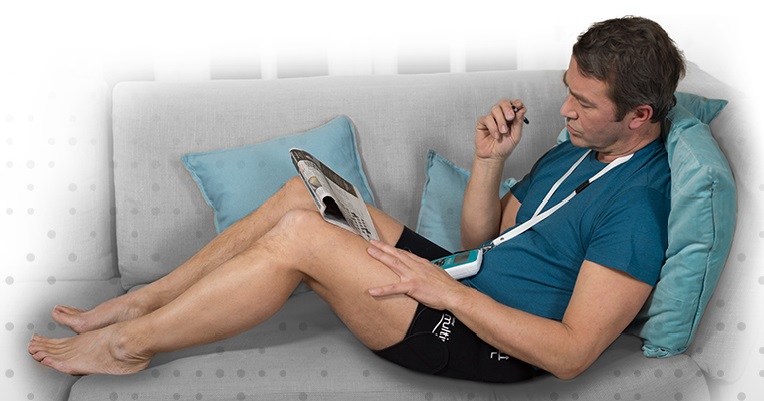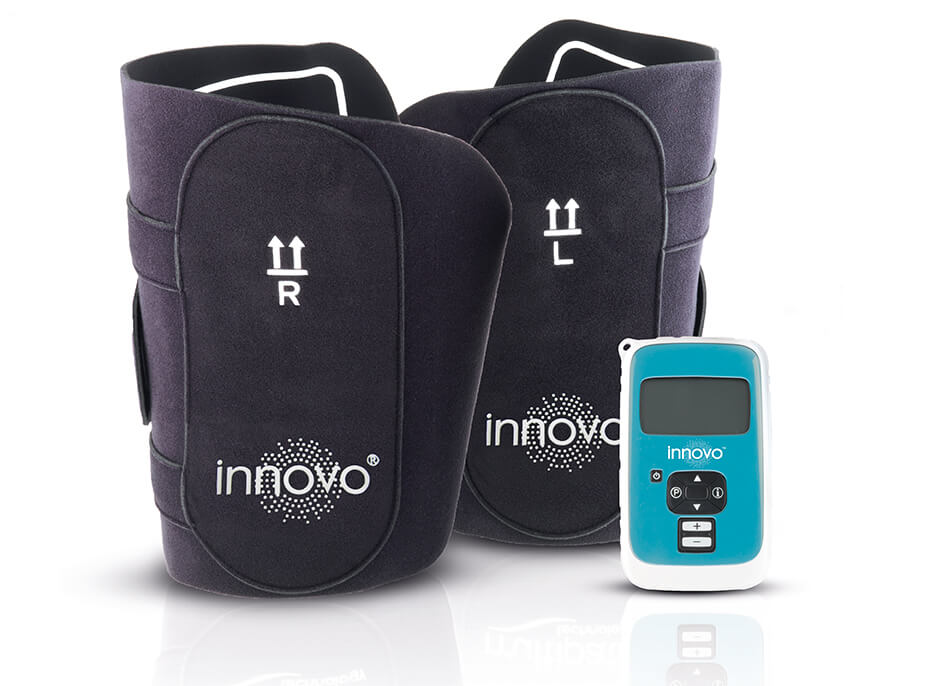Post Prostate Cancer surgery? Suffering with leaks? A revolutionary, new incontinence treatment has got everyone talking…
Prostate cancer is the most commonly diagnosed form of cancer found in men in the UK with over 41,000 cases reported on average each year1. Radical prostatectomy surgery is quickly becoming the preferred surgical treatment option given its nerve-sparing techniques, however there are two commonly experienced post-operative side effects: Urinary Incontinence and Erectile Dysfunction1.
A 2011 trial demonstrated that a whopping 89% of radical prostatectomy patients experienced urinary incontinence post-surgery, with the majority of these patients still experiencing leaks three months later1. Other studies and patient testimony have proven that in some patients, if untreated, urinary incontinence can linger for several years after surgery2.
It’s easy to become overwhelmed with the various treatment options available for this disruptive, embarrassing condition – Which treatment option poses the greatest health risk? Which treatments will solve the problem rather than just mask the symptoms? Here we cover the pros and cons of the most common treatment options available to prostatectomy patients for Urinary Incontinence, and why one revolutionary treatment option in particular has got everyone talking…
What happens during surgery that causes the leaks?
During Radical Prostatectomy surgery, the prostate gland and some of the surrounding tissue is removed, causing bladder-neck weakness resulting in less resistance to bladder pressure and control over the pelvic floor3. This most commonly manifests itself in Prostatectomy patients as Stress Urinary Incontinence (SUI), Urge Urinary Incontinence (UUI) or Post-Micturition Dribble1.

Common Treatment Options (Post Prostatectomy) – Pros & Cons
Absorbent Pads & Pants
Absorbent Pads & Pants are commonly used to give patient’s the peace of mind to get out and perform daily activities, without the fear of embarrassing accidents. However, they DO NOT provide a solution, and they should be used as a means of managing the condition whilst ‘solution based’ treatments are pursued. Pads & Pants can be expensive (over a year or a lifetime), uncomfortable and damaging to a person’s confidence and dignity.
Pelvic Floor Exercises
Pelvic Floor Exercises are widely regarded as the most favourable and conservative treatment pathway for prostatectomy patients suffering with Stress Urinary Incontinence (SUI) and Erectile Dysfunction1. Evidence suggests that SUI can be successfully treated using pelvic floor exercises if undertaken consistently & on a regular basis, and patients experiencing Erectile Dysfunction may also benefit from pelvic floor exercises1. Pelvic Floor Exercises carry minimal health risks and involves strengthening of the pelvic floor muscles to restore control over the bladder and bowel.
Electrical Muscle Stimulation (EMS) Devices:
- EMS devices are used to automatically stimulate the pelvic floor muscles, sending targeted impulses to the pelvic floor muscles, and strengthening them over time. It automates the process of pelvic floor exercises, and work especially well for those with a very weak pelvic floor.
- They are generally probe based (in men, these are inserted rectally), however, a new non-invasive, completely external EMS technology is available called INNOVO®, which can help patients overcome urinary leaks in as little as 4 weeks. Learn more about INNOVO® here.
Body Worn Urinals
A Body-Worn Urinal (BWR) is a general term for a range of reusable external management devices for incontinence, which collect urine as it leaves the body6. A Body Worn Urinal provides an alternative to the less commonly prescribed Urinary Sheath (External Catheter), and are usually secured to the body with straps, specially designed underwear, or adhesive.
Urinary Sheaths (External Catheter)
Urinary Sheaths are less commonly known about by incontinence patients. Likened to a condom in appearance, Urinary Sheath’s are usually made of either Latex or Silicone Rubber and, much like a Body-Worn Urinal, collects urine as it leaves the body4. They may be connected to a drainage bag or catheter valve for light leakage4.
Body-Worn Urinals and Urinary Sheaths DO NOT treat incontinence and should be used as a temporary measure to manage the condition of incontinence, while ‘solution based’ treatments are pursued. Urinary Sheaths can cause skin damage if not kept scrupulously clean at all times4.
Artificial Urinary Sphincter
Artificial Urinary Sphincter’s are fitted surgically. A small device is implanted allowing you to control when you urinate2. As with any surgery, there are risks involved including infection and there is also the added risk of the device breaking2. Around 10% of men will need to have these removed due to risks/infection, while others require additional surgery to fix these problems2.
Internal Male Sling
Internal Male Slings are also fitted surgically. A small piece of material is fitted which presses gently on the urethra to prevent urine from leaking2. Side effects include pain, for first three month’s post-surgery infection – up to 12% of patients will require the sling to be removed2. A small number of men will experience urine retention issues because of this surgery2.
Adjustable Balloons
Another surgical treatment, yet not as commonly prescribed, two fluid-filled balloons are surgically fitted which press on the urethra to prevent urine leakage2. Side effects include infection; balloons can shrink or move – 30% of patients will require the balloons to be removed2.
Medication
Medicines can be prescribed to either keep the urethra closed or to calm down the bladder (for Urge Incontinence)2. All drugs carry individual side effects, so a patient MUST consult their doctor before taking such medication. It should be remembered that medication DOES NOT treat Incontinence, it simply manages the symptoms. Therefore, medication should only be considered for use while ‘solution based’ treatment options are pursued.
The Revolution. Introducing INNOVO®
INNOVO® is a revolutionary, non-invasive medical device which is clinically proven to restore pelvic floor muscles gently and effectively, treating the root cause, and not just the symptoms of bladder weakness. INNOVO® stimulates the entire pelvic floor muscles by delivering 180 highly effective contractions per session via a set of conductive gel pads, allowing the device to do your pelvic floor exercises for you. Designed for use by women and men, INNOVO® is completely external (there are no probes) and clinically proven to help control urinary leaks in as little as 4 weeks5.

Unlike many Pelvic Floor Exercise devices used to treat Incontinence available in the UK, INNOVO® has been developed to effectively treat both women and men, without the need for invasive probes.
“I first started experiencing leaks after my prostate cancer surgery. It’s very dehumanising, very degrading. It makes you lose your self-confidence, self-esteem and dignity”. Alpha tried several prescribed treatments before finding success using INNOVO®. “Within a very short period, within two months, I started seeing a lot of improvement. I would recommend INNOVO®, it’s a wonderful thing, it’s a wonderful device”
– Alpha
Darren Breen, Managing Director of iMEDicare UK, says “We deal with post prostate cancer patients everyday just like Alpha who have been through treatments cycles with INNOVO®, and time after time we are seeing incredible results. Our patient’s lives are impacted in so many ways by their incontinence – they just want to get out there and live their life as they normally would. INNOVO® is giving them back their freedom – it’s solving the problem, rather than just addressing the symptoms”.
Why the Bladder & Bowel Community loves INNOVO®:
- It’s a solution that treats the condition, rather than hiding the symptoms
- It’s non-invasive – the device is completely external, there are no probes
- It’s clinically proven to safely activate the entire pelvic floor muscles
- It’s cost-effective – it’s cheaper over time than buying pads & less risky than surgical treatments
- It’s a home-based treatment

LEARN MORE ABOUT INNOVO®
Get your INNOVO® today from just £41.50^ at www.restorethefloor.com
INNOVO® is also available to purchase through iMEDicare who offer free home demonstrations and consultations. Call 01923 23 77 95 to arrange with iMEDicare today.
INNOVO® can also be found at LloydsPharmacy stores and at John Bell & Croyden, London.
Available in Small, Medium & Large sizes.
1British Journal of Nursing, 2013 (Urology Supplement), Vol 22, No 9
2Prostate Cancer UK (2017)
3Colley, Wendy (2014), Nursing Times, Incontinence Following Prostate Cancer Surgery
4Continence Product Advisor (2017)
5Soeder S, Tunn R. Neuromuscular electrical stimulation (NMES) of the pelvic floor muscles using a non-invasive surface device in the treatment of stress UI (SUI); a pilot study. IUGA Poster Presentation Conference, 2013; Dublin, Ireland.
6Continence Product Advisor (2017)
^Pay by Instalments Price – spread your payment over six payments of £41.50 p/month, or purchase outright for £249.









